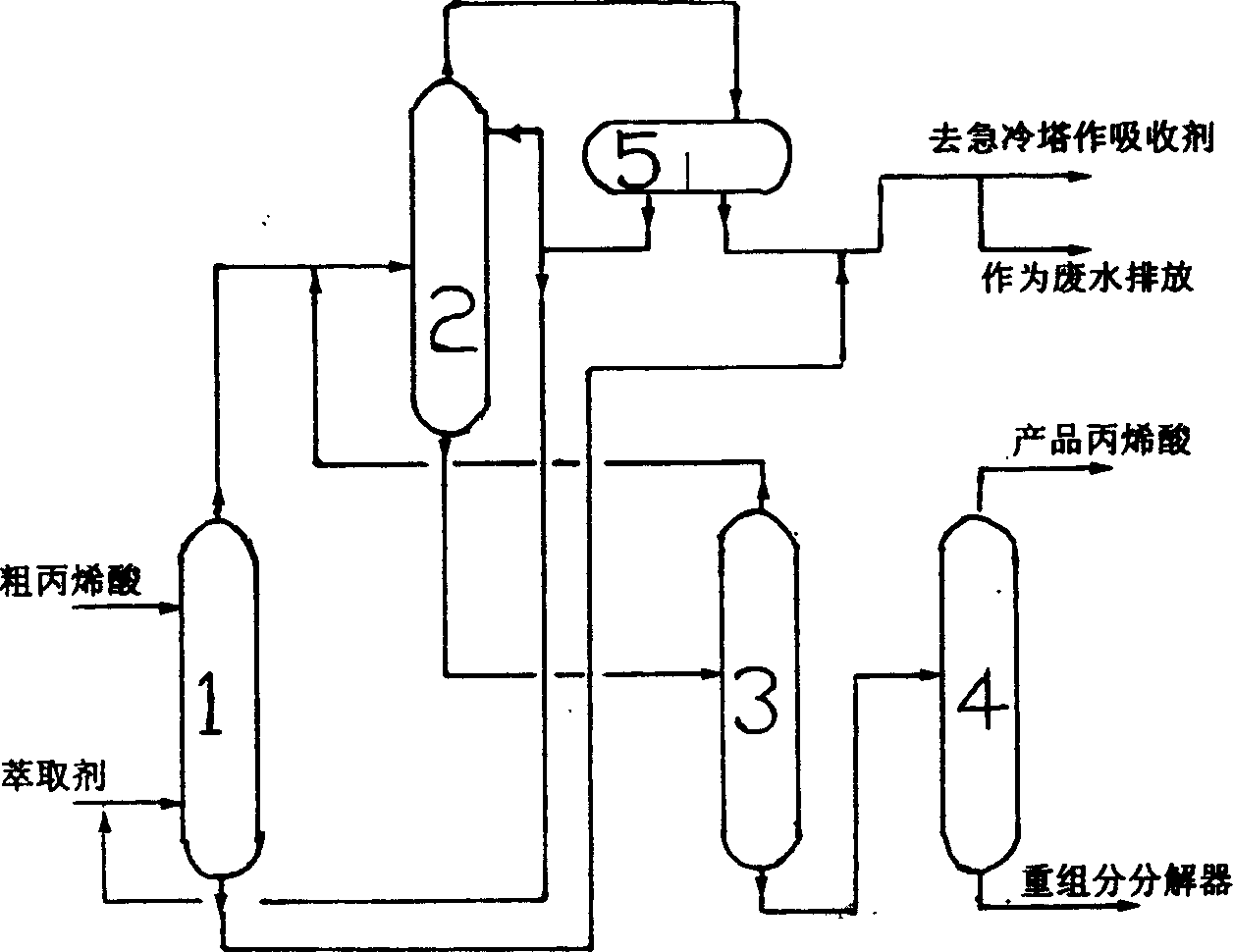Method for purifying acrylic acid
A technology of acrylic acid and acetic acid, applied in the separation/purification of carboxylic acid compounds, organic chemistry, etc., which can solve the problems of increasing the difficulty and complexity of extraction operations
- Summary
- Abstract
- Description
- Claims
- Application Information
AI Technical Summary
Problems solved by technology
Method used
Image
Examples
Embodiment 1
[0017] Table 1 Extraction effect of each extractant
[0018] No. Extractant Extractant / crude acrylic acid solution (mass ratio) Extraction rate (wt%)
[0019] 1 Isobutyl acetate 1:1 95.55
[0020] 2 isopropyl ether 1:1 94.00
[0021] 3 butyl acetate 1:1 93.98
[0022] 4 Propyl acetate 1:1 93.56
[0023] 5 toluene 1:1 58.58
[0024] As can be seen from Table 1, in the single extractant tested, the extraction effect of isobutyl acetate is the best. Isopropyl ether is next, and butyl acetate is third.
Embodiment 2
[0026] Table 2 Extraction effect of compound extractant
[0027] No. Extractant Extractant / crude acrylic acid solution (mass ratio) Extraction rate (wt%)
[0028] 1 toluene / isobutyl acetate 3:1 98.48
[0029] 2 toluene / butyl acetate 3:1 98.25
[0030] 3 toluene / isopropyl acetate 3:1 97.24
[0031] It can be seen from Table 2 that among the tested compound extractants, the extraction effect of toluene / isobutyl acetate is the best, and the extraction rate can reach 98.48%, which is better than the extraction effect of toluene / butyl acetate.
Embodiment 3
[0033] Table 3 Extraction effect of extractant under different extraction ratio
[0034] Toluene: isobutyl acetate: crude acrylic acid solution (mass ratio) extraction rate (wt%)
[0035] 2:1:1 87.50
[0036] 1.5:1.5:1 96.63
[0037] 1:2:1 98.48
[0038] As can be seen from Table 3, when the extraction ratio is 1:2:1, the extraction effect of toluene / isobutyl acetate is the best.
PUM
| Property | Measurement | Unit |
|---|---|---|
| extraction efficiency | aaaaa | aaaaa |
| extraction efficiency | aaaaa | aaaaa |
| extraction efficiency | aaaaa | aaaaa |
Abstract
Description
Claims
Application Information
 Login to View More
Login to View More - R&D
- Intellectual Property
- Life Sciences
- Materials
- Tech Scout
- Unparalleled Data Quality
- Higher Quality Content
- 60% Fewer Hallucinations
Browse by: Latest US Patents, China's latest patents, Technical Efficacy Thesaurus, Application Domain, Technology Topic, Popular Technical Reports.
© 2025 PatSnap. All rights reserved.Legal|Privacy policy|Modern Slavery Act Transparency Statement|Sitemap|About US| Contact US: help@patsnap.com

